To celebrate the release of Star Trek: Into Darkness this month, we’ll be running through the first season of the classic Star Trek all this month. Check back daily to get ready to boldly go. It’s only logical.
That came together rather well, didn’t it? With the current success of Star Trek as a blockbuster movie franchise, it’s fun to speculate about the show possibly returning to television. Being honest, I would be nervous about that. In this cut-throat age where ratings need to solidify (or start rising) almost immediately, I wouldn’t trust the first season of a Star Trek spin-off to rope in viewers quick enough. None of the Star Trek spin-offs, from The Next Generation through to Enterprise, had what could be considered “strong” first years. Occasionally there were a few classic episodes buried in there, as with Deep Space Nine, but it always seems to take a Star Trek show some time to find its “space legs”, so to speak. Time that I am not sure it would be afforded in the current market place.
Which makes it all the more spectacular that Star Trek itself started out so phenomenally. The first year of the show (and the franchise) is not only the best first season of any Star Trek show ever, it’s also in the running for the best of the thirty seasons of television that the franchise has produced. Not bad at all, considering that it seems like nobody had any idea what exactly they were doing when they started out.
Looking at the first year of Star Trek, it seems like the show should be doomed. The series’ first episode didn’t even make it to air. The next few episodes swapped in and out cast members like nobody’s business. The thrills were pulpy. The special effects were occasionally a bit ropey. And yet, somehow, it worked. Not every hour of this season is a classic, but it’s amazing just how iconic these stories have become, and how deeply they’ve waded into the popular consciousness. Even the relatively unexceptional Dagger of the Mind became a South Park spoof!
There are classics here. There are episodes that endure, and that can be measured among the very best of 700+ episodes of that the show has ever produced. Balance of Terror might be my favourite episode of all time, but there are several other competitors from this very year. You can’t get any more fundamentally Star Trek than The Devil in the Dark. If you want proof that this is more than just a cheesy science-fiction showcase, then The City on the Edge of Forever makes a pretty compelling argument.
Star Trek galvinised itself remarkably quickly. Watching these early episodes, there were occasional blips – hey, there’s McCoy! why is Spock wearing gold? what’s with those collars? – but the show figured out the basic stuff pretty quickly. Even though he wouldn’t be added to opening credits until the second season, for example, the show grasped the importance of Leonard McCoy as a character early on. Although he wasn’t in the first episode produced, he was the focus of the first episode aired. Even the unfortunate changes, like removing the character of Janice Rand following some shameful behind-the-scenes incidents, were carried out fairly swiftly.
It seems like the show really had everything pretty much figured out by The Corbomite Manoeuvre, the first episode of the show produced following the second pilot. There was none of the extended identity crisis that grabbed many of the spin-off shows. The Next Generation would spend too much of its first two years trying to be the classic Star Trek. Deep Space Nine and Enterprise would arguably spend too much of their first two seasons trying to be The Next Generation. Star Trek: Voyager never become its own show.
Perhaps the original Star Trek found its voice so quickly because it didn’t exist in the shadow of an iconic predecessor. It didn’t have to waste time figuring out what it wasn’t, and could instead try to work out what it actually was. As piece of sixties television, Star Trek was beyond ambitious. There had been science-fiction television shows before, and space adventure serials, but Star Trek was something new and vibrant. It was bold and bright and colourful, and it spoke to the generation of the sixties.
NBC were owned by RCA, a manufacturer of colour televisions. As BFI TV Classics: Star Trek notes, “NBC wanted the show to be as colourful as possible to foreground their ‘brought to you in living colour’/Peacock network marketing campaign and to sell colour television sets for parent company RCA.” As a result, the first screen really pops off the screen. (Indeed, it looks quite impressive on blu ray.) Even the interior shots of the Enterprise frequently incorporate coloured lighting to help keep things vibrant. It has been suggested that the show’s use of colour may have been what kept it alive into its third year, despite all the fan letter campaigns.
Even today, Star Trek pops off the screen in a way that the spin-offs don’t. The rich saturated pop! aesthetic of Star Trek has aged remarkably well, arguably better than the rather sterile chic of The Next Generation or even the stylised architecture of Deep Space Nine. The sets don’t look entirely real or convincing, but they aren’t trying to be. Instead, they seem more imaginary than real, more vibrant than anything that could exist.
That’s not to dismiss the care of the craft that very clearly went into the show. It’s obvious that the production team were doing fantastic work. The sets and the costumes look fantastic, all the better for the decision not to emulate reality. The musical score to the season is wonderfully effective and often ethereal, lending the whole production a sense of class while remaining true to the pulpy roots of the premise.
I’ve been watching the remastered versions of the episodes. It’s my first time to watch the show this way, having watched the original versions quite a few times. I’ve referenced the updates and amendments several times in my individual reviews, and I’m generally quite fond of the updates. As long as the originals are preserved and kept available, I have no problem with attempts to make Star Trek more accessible to modern audiences. (In fact, that’s probably why I am so fond of JJ Abrams’ reboot, as it concedes that there are people who watch to watch Star Trek who are not die-hard fans.)
Watching the remastered effects, I’m very impressed at how well the restoration team has kept to that aesthetic. Indeed, the design of Balok’s craft in The Corbomite Manoeuvre feels like something taken right out of the sixties and rendered with loving CGI. The climax of Tomorrow is Yesterday might have been a little ambitious, but it seems like the CGI work is more concerned about fitting in with the show’s aesthetic than it is with trying to be pseudo-realistic or especially convincing.
It’s very interesting to watch Star Trek today, in the era of large arc-driven television shows, where it seems like even the most episodic television show has embraced serialisation to some degree or another. Star Trek is truly episodic. It often seems like there are no repercussions outside of the individual episode. Kirk’s love affair with Edith Keeler in The City on the Edge of Forever might be the most heart-breaking piece of Star Trek romance ever, but Keeler was never mentioned again. Similarly, Kirk seems to recover from the loss of his brother and sister-in-law in Operation — Annihilate! relatively quickly, with a nephew who is also quickly forgotten.
The show’s own internal continuity didn’t seem that tight. The show couldn’t decide whether Spock was a “Vulcan” or a “Vulcanian.” In The Conscience of a King, McCoy even suggests that the Vulcans were “conquered.” Kirk could be working on an “Earth” ship in one episode, as part of “Space Fleet Command” in another and in “Starfleet” in a different story. The show couldn’t even tie down the year in which it was set, with stardates allowing the show to avoid setting a date. Even those weren’t kept entirely consistent. For example, the second-season episode Patterns of Force would seem to fall between The Squire of Gothos and What Are Little Girls Made Of?
The Klingons could be introduced in Errand of Mercy at the end of the season, with reference made to their long-running antagonism towards Starfleet, despite the fact that they hadn’t been mentioned in any of the prior episodes. Even The Next Generation made sure to name drop the Ferengi in Encounter at Farpoint, a few episodes before introducing them in The Last Outpost. The Borg were hinted at in The Neutral Zone, before appearing in Q Who?
It’s quite telling how many of the “supplemental” pieces of tie-in fiction are dedicated to “connecting” or “tying” episodes together, trying to fashion a sense of inter-episode continuity to the first season of Star Trek. After all, a whole franchise is built from these roots, so there is a temptation to go back and to solidify them. After all, all those fanboy-ish arguments about continuity and “canon” don’t mean anything if the show itself was fairly elastic from the outset, right?
There are books and comics and various other pieces of Star Trek material that attempt to connect and to fill in the gaps between these stories. Some times it’s simple plot mechanics, or foreshadowing and plot-related stuff – where were the Klingons for the rest of that season? what else happened during Pike’s time in command? Sometimes it is an attempt to create character continuity, to deal with the character suggested by the episodes rather than developed within them – how did Kirk deal with Keeler’s death? what’s the deal with McCoy?
It’s worth noting that Star Trek didn’t always have the best character work. I’d argue that Kirk is much less developed as a character than Sisko or Picard. The show just wasn’t designed to delve into his character in that particular way, probably a result of the episodic nature of the series. However, that’s not necessarily a weakness. Kirk, Spock and McCoy are all instantly recognisable pop archetypes. We know what each part of the trio represents, and we know where they stand. They are constants. In a way, I suspect that is why they have endured so much, and become fixtures of the pop cultural landscape.
That said, there wasn’t ever too much character development in the show. None of the three finished the show too far from where they had started. Spock arguably came the furthest, making peace with his father at the end of Journey to Babel, a character development that would remain in place through the film franchise. Somewhat tragically, Sarek’s appearances in The Next Generation would suggest their reconciliation didn’t last, but it feels like the most profound shift over the show’s run. Most of the character development for the cast of the original television show took place in the films, with even characters like Sulu and Uhura becoming better defined.
That’s not to criticise the regulars. As noted above, there’s a reason this crew is iconic, and I suspect their unchanging nature is at least part of that. The performances help too. William Shatner has become a cult celebrity, a mythical personality, but his work on the show was generally quite good. Towards the end of the second year Shatner would let himself go a bit, but his first season performances are mostly quite great. The only truly “over-the-top” Shatner-esque performance appears in The Enemy Within, and – even then – Shatner is hamming it up as evil!Kirk, so it’s easy to justify.
Leonard Nimoy is a rare asset for a franchise like Star Trek. He is the perfect performer for the perfect role, and his interpretation of Spock is absolutely superb – Nimoy never quite swallowed Spock into his persona in the way that Shatner consumed Kirk. Despite Nimoy’s need to publish the conflicting I Am Not Spock and I Am Spock, Spock feels very much like a character rather than a persona.
It’s a great performance, and Nimoy is all the more impressive for retaining his dignity while wearing pointy ears, making funny gestures and sharing a scene with a giant pizza. If you want proof of Nimoy’s talent, imagine that Devil in the Dark scene with Shatner. It’s terrifying, and it gives you a sense of the poise and composure that Nimoy brought to what might have been just another quirky sidekick bit part.
DeForrest Kelley tends to get overlooked a lot when talking about the performers who worked on the classic Star Trek. His role isn’t as showy as Shatner or Nimoy. In fact, he was the last of the three to arrive on the show, despite the fact that Roddenberry had wanted him from the outset. However, Kelley works phenomenally well as part of the ensemble. He shares his scenes much better than Shatner or even Nimoy, and is very generous when he is asked to share. McCoy is the least developed of the trio, but that means that Kelley has a bit more freedom to define the role. It’s a great, and oft-overlooked, part of Star Trek‘s charm.
And then there’s the rest of the bridge crew, often left with little to actually do. Star Trek was always a show driven by the leading trio – and, even then, more by Kirk and Spock than by McCoy – so it’s no surprise that the other characters were generally pushed to the background. However, they make the most of the material the are given. Takei relishes every moment he is on-screen in The Naked Time. Nichelle Nichols handles snazzy one-liners whenever they are offered. Even James Doohan has a sort of benign charm as the reliable Mr. Scott.
These characters never really got a chance to shine, at least until the films, but it’s telling that they are probably more identifiable and recognisable than any of the better-developed ensemble players in any of the spin-offs. Star Trek tended to deal well with broad archetypes and characters that were illustrated in broad strokes rather than fine detail. I can’t tell you too much about their interests or personal lives, but you can see how each of the characters slots into a story. This is probably just as much a result of the show’s episodic nature. No room for character arcs or development.
The show is so episodic that you can jumble up the episodes and watch them in pretty much any order. I reviewed them in production order because the early episodes offer a clear sense of progression as the show defines what Star Trek actually is, something that happens so very fast that it has already worked it all out by the first episode to actually air. Beyond that, I don’t really have a preferred order to watch the episodes, and I can see the broadcast order might have been shuffled.
Court Martial and The Menagerie feature two back-to-back visits to Starbase 11, with a long gap between them, apparently. I can see why you’d split them up. I can also understand why you would bury The Alternative Factor as deeply within the season as humanly possible. Let’s not let that monster out of the can until we absolutely have to. No point in letting the viewers know how far the show can sink until we have no other option.
In fact, I quite like the episodic model of Star Trek. It feels rather strange in this era of serialisation, but it’s fun to imagine a show that you could just give to somebody with no need for an introduction. Anybody looking to try Star Trek can just pick any random “top ten” recommendation list on the internet and watch it without feeling locked out. You need to know as much going into The Turnabout Intruder as you do going into Where No Man Has Gone Before. A new viewer doesn’t need to worry about previous events when trying to watch The City on the Edge of Forever.
I know, it’s not as if a lack of knowledge of Star Trek continuity would be a major problem jumping into The Best of Both Worlds, one of the best episodes of The Next Generation ever produced. However, there is a sense that the show is slowly building on what came before. Certainly, you couldn’t jumble up episodes of any of the spin-offs and hope they make sense on re-watch. Well, except Voyager, but it has its own problems. It sucks.
Which brings us to something truly remarkable about this first season. Because it doesn’t matter if you can jumble up the episodes and watch them in any order if they’re all crap. There’s literally no point in that, beyond some academic exercise. However, Star Trek is – generally speaking – good enough to justify watching, and it’s nice to know that you can watch it in any order you see fit at your own pace. Even the show’s oft-maligned third season has moments of greatness buried within it. However, those moments of greatness are quite concentrated in this first run of classic Star Trek episodes.
While reviewing the individual episodes, I argued that The Alternative Factor is the only irredeemably bad episode of this first season. Yes, there are some episodes that are pretty bland. Court Martial is just nonsense, Operation — Annihilate! tries too hard to make us invest in the threat, The Menagerie, Part II is just padding and Mudd’s Women embodies a lot of the creepy sexism that pervades even the stronger episodes of the season. However, they are all still interesting in some small way, and I’m willing to forgive a lot for something interesting. I’d rather watch an interesting failure than a mediocre success. That’s why I dislike Voyager so much.
So, out of twenty-nine episodes (thirty counting the original pilot), there is one complete out-and-out failure and there are four misfires that are intriguing enough to justify their existence. That leaves twenty-four (or twenty-five) episodes in the “very good to downright classic” range. That’s a pretty phenomenal ratio, especially for the first season of a science-fiction show that seemed to be improvising for most of the season.
I think it’s fair to make the case that this first season is the strongest of the three seasons of classic Star Trek. I’ll concede that the second season probably has at least as many truly classic episodes, if not one or two more. (Off the top of my head, Amok Time, Mirror, Mirror, The Doomsday Machine, The Trouble With Tribbles and Journey to Babel.) However, I think the average quality over the first season is considerably higher. Then again, these are the two best seasons of one of the most influential television shows ever made. So I think that the comparison is perhaps a little unnecessary.
That said, there is something quite cool about the way that this first year of Star Trek still measures up to the very best that the franchise has to offer. I would probably rank this season as one of the best seasons of Star Trek ever broadcast, with only the third season of The Next Generation and the fifth season of Deep Space Nine truly in the competition. It’s really something to still be impressed with a year of television produced on a tight budget and pressing schedule.
What’s also remarkable is how in line with the time so many of these episodes were, how deeply engrained in the pop psychology of the sixties, as if granting the viewer a window through which they might peer into the collective subconscious. At a time when very little television dared to be political, or to tackle the big issues of the day, it’s ironic that the most wry political commentary should come from a fusion of two of the genres furthest from contemporary reality – westerns and space opera.
Watching these episodes again, I came to really notice how deeply divided Star Trek itself seemed to be on some of the key issues. Given its nature as an episodic television show, the product of countless writers, it made sense that there was occasionally a bit of conflict with the show’s vision. Was it a patriot analogy for the American involvement in the Cold War? Reading The Return of the Archons and Operation — Annihilate! as anti-communist propaganda, you could make that argument. Even The City on the Edge of Forever seemed to acknowledge a need for conflict.
However, the show also seemed to condemn the Cold War itself as a game not worth playing. A Taste of Armageddon had Kirk disrupting a “clean” state of perpetual warfare analogous to the Cold War, while Errand of Mercy equated the Federation and the Klingons as two parties lost in their own heated need for conflict. Star Trek generally adopted a relatively liberal worldview, but the nature of episodic television – calling on writers with unique perspectives – meant that world view wasn’t always consistent.
Still, the show did dare to hope for a better tomorrow, one where humanity had managed to survive conflict and warfare to reach a point where the thirst for knowledge could be the primary motivating factor. The Eugenics Wars in Space Seed and the Earth-Romulan War from Balance of Terror suggested that humanity had a long way to go, but the stars would be waiting for us when we got out there. Quite a romantic idea, actually.
I don’t think the writers and the producers ever imagined the impact that the show would have, or that it would become such a fixture of the cultural landscape. That it holds up so well is a miracle, and a testament to all the work and skill involved in the show’s production. Almost half-a-century of television history, starting right here. It’s breathtaking.
You might be interested in our other reviews from the first season of the classic Star Trek:
- The Cage
- Supplemental: Vulcan’s Glory by D.C. Fontana
- Supplemental: Early Voyages #1 – Flesh of my Flesh
- Supplemental: Crew by John Byrne
- Where No Man Has Gone Before
- The Corbomite Manoeuvre
- Mudd’s Women
- The Enemy Within
- The Man Trap
- The Naked Time
- Charlie X
- Balance of Terror
- Supplemental: My Enemy, My Ally by Diane Duane
- Supplemental: Romulans: Pawns of War by John Byrne
- What Are Little Girls Made Of?
- Supplemental: Errand of Vengeance: The Edge of the Sword by Kevin Ryan
- Dagger of the Mind
- Miri
- The Conscience of a King
- The Galileo Seven
- Court Martial
- The Menagerie, Part I
- Supplemental: Early Voyages #12-15 – Futures
- The Menagerie, Part II
- Supplemental: Burning Dreams by Margaret Wander Bonanno
- Shore Leave
- The Squire of Gothos
- Arena
- Supplemental: Requiem by Michael Jan Friedman & Kevin Ryan
- The Alternative Factor
- Tomorrow is Yesterday
- The Return of the Archon
- A Taste of Armageddon
- Space Seed
- This Side of Paradise
- The Devil in the Dark
- Errand of Mercy
- Supplemental: Spock Must Die! by James Blish
- Supplemental: The Final Reflection by John M. Ford
- The City on the Edge of Forever
- Supplemental: The City on the Edge of Forever by Harlan Ellison/Cordwainer Bird
- Supplemental: Crucible: McCoy – Provenance of Shadows by David R. George III
- Supplemental: Star Trek (Gold Key) #56 – No Time Like the Past
- Operation — Annihilate!
Filed under: The Original Series | Tagged: Dagger of the Mind, games, Janice Rand, Leonard McCoy, NBC, Next Generation, spock, Star Trek Games, Star Trek Into Darkness, star trek: enterprise, star trek: the next generation, StarTrek, Television and Movies, Trek, Where No Man Has Gone Before |















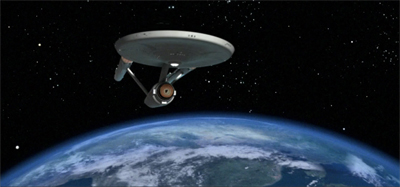
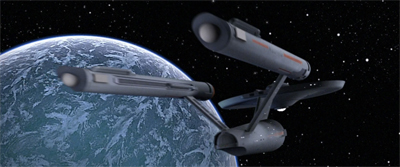
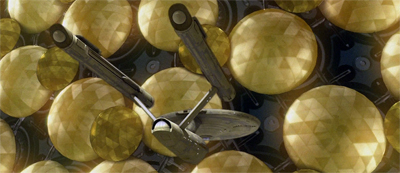
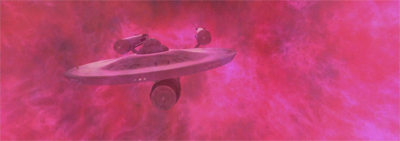
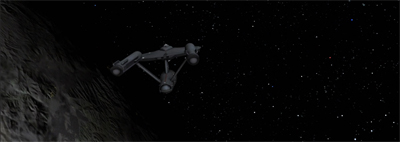


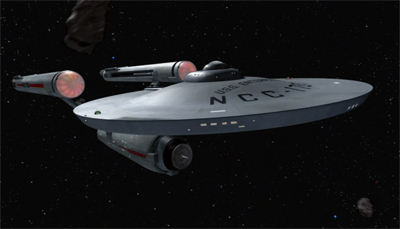
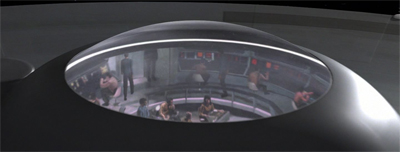
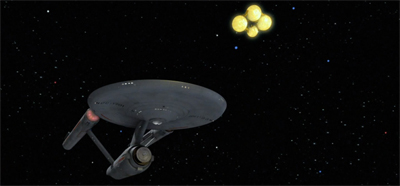
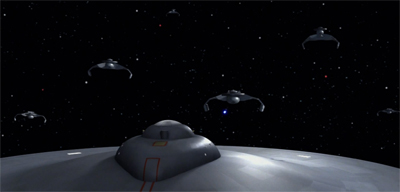
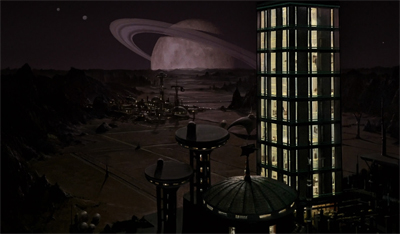
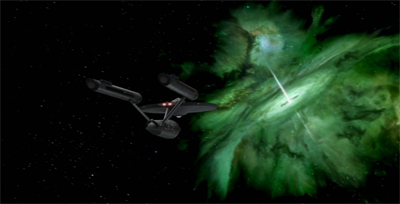
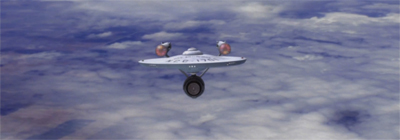
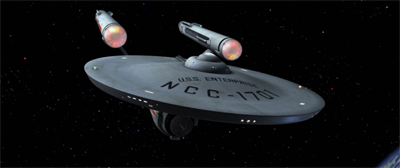
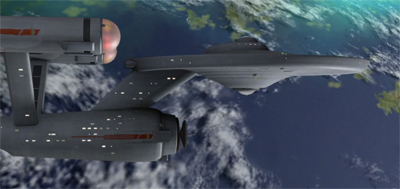

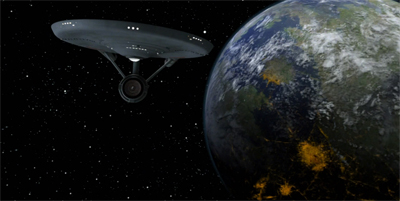
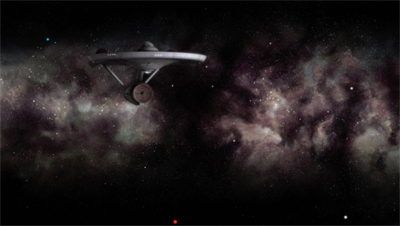





Reblogged this on Current Issues and commented:
You can also view updates by following @diebere7, @snostalgia via @mnetafrica
I’m really enjoying your reviews of Season 1 of classic Star Trek; I hope you’ll do Season 2 at some point, too.
Thanks Corylea. I’m toying with the idea of doing the second season next year for The Cage’s 50th birthday, and the third season in 2016 for the franchise’s 50th birthday. Then again, it really depends on the response. I am glad you enjoyed these articles though. I will definitely be doing the first and second seasons of Deep Space Nine in September and the second and third seasons of the Next Generation in November/December.